The foods that ruled Britain in the 90s
A decade of food hits (and misses)
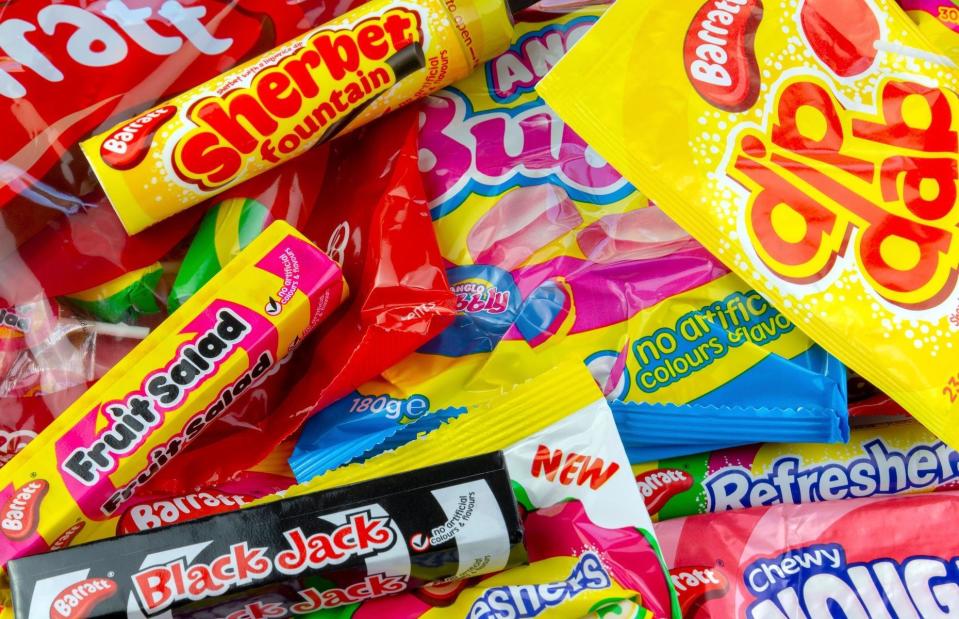
MarkUK97/Alamy Stock Photo
The 1990s might be remembered for Britpop, boy bands and girl power, but Britain's culinary delights are just as memorable as its music scene. This was a vintage decade for food and cooking trends. From Pot Noodles and turkey dinosaurs to posh pesto and the Pret sandwich, it was a time of culinary highs (and a few lows).
Join us on our nostalgia-fuelled journey back in time to see the food that fuelled 1990s Britain – how many do you remember?
Banoffee pie
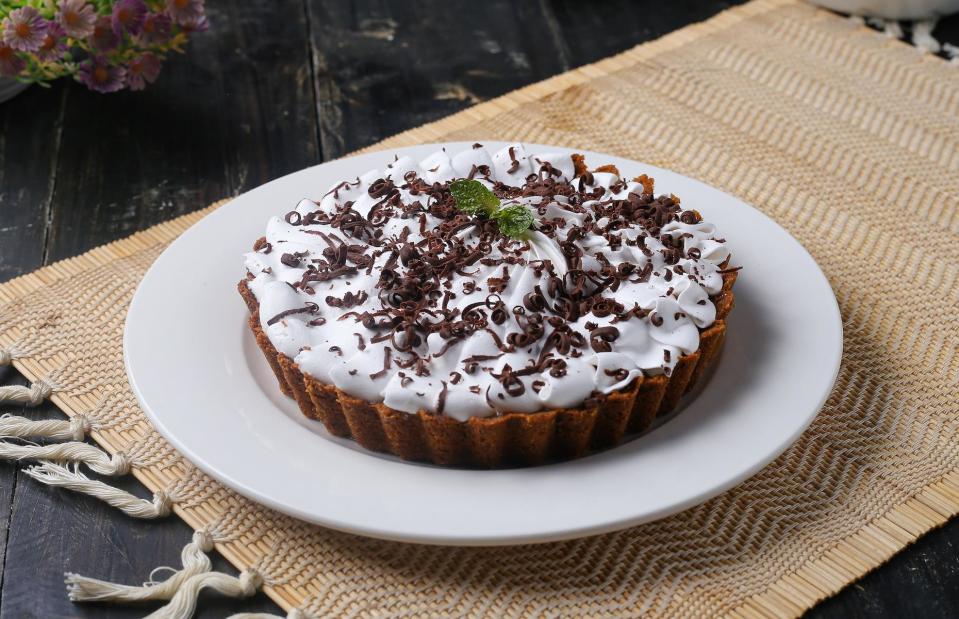
Usaf Jaffari/Shutterstock
Was a dinner party really a dinner party without a slice of banoffee pie? Featuring sliced bananas, a gooey, toffee-like sauce and whipped cream layered over a crumbly biscuit base and finished with chocolate shavings, this cloying English dessert was reasonably easy to prepare and brought a touch of exoticism to proceedings. Though it was (and, in some cases, still is) hugely popular elsewhere, including the US, banoffee pie was actually invented at The Hungry Monk Restaurant in East Sussex, in 1971, finally coming into its own in the 1990s.
Ben & Jerry's
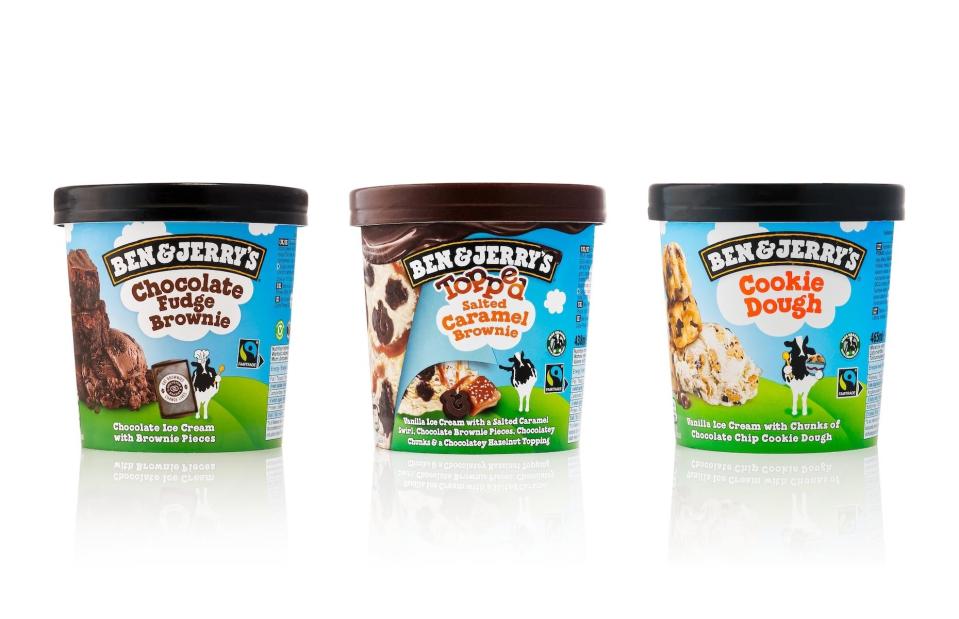
InFocus.ee/Shutterstock
Launched in Vermont in 1978, by school friends Ben Cohen and Jerry Greenfield, Ben & Jerry’s had well and truly captured the US market by the time the brand appeared in the UK in 1994. We loved its iconic flavours, Cookie Dough and Chocolate Fudge Brownie, and fell for Phish Food when it joined the family in 1997. Eating it straight from the tub was de rigueur on girly sleepovers, mimicking the film trope of heartbroken American teenagers mainlining ice cream. It also helped that ultimate 1990s icon, Rachel Green (Jennifer Aniston), was seen eating a tub of Ben & Jerry’s in a 1994 episode of Friends.
Arctic Roll
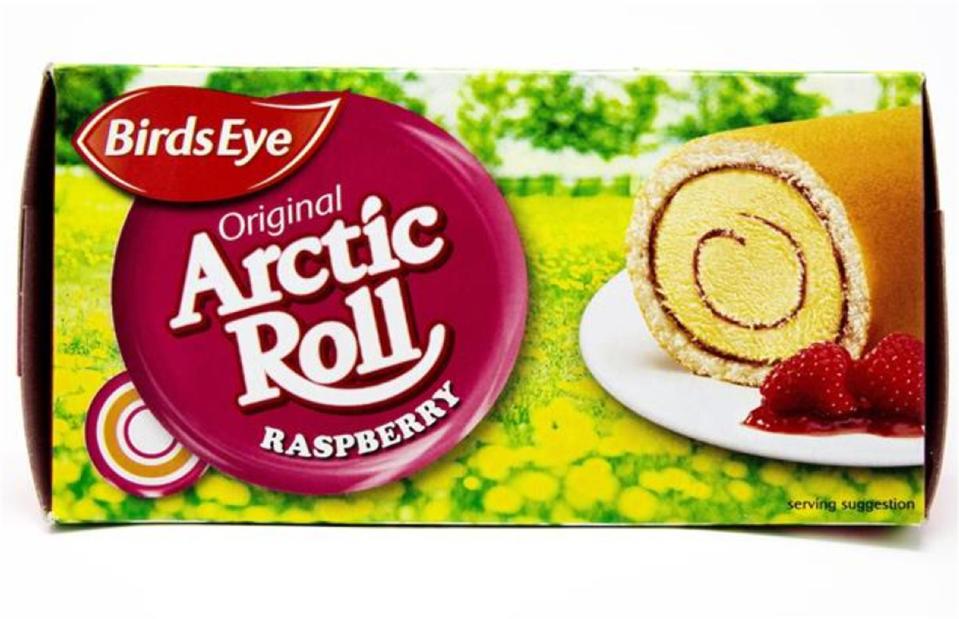
Malcolm Haines/Alamy
Birds Eye Arctic Rolls were often spotted in 1990s freezer cabinets, although they first appeared in the freezer aisle of supermarkets in 1970. A winning, and somewhat mind-bending, combination of vanilla ice cream swirled with raspberry jam and encased in a vanilla sponge, it was a good day if you were served a slice of this frozen pud for afters. Despite its cult-like status, Birds Eye discontinued the teatime treat in 1997, only for it to make a welcome comeback a decade later.
Birds Eye Potato Waffles
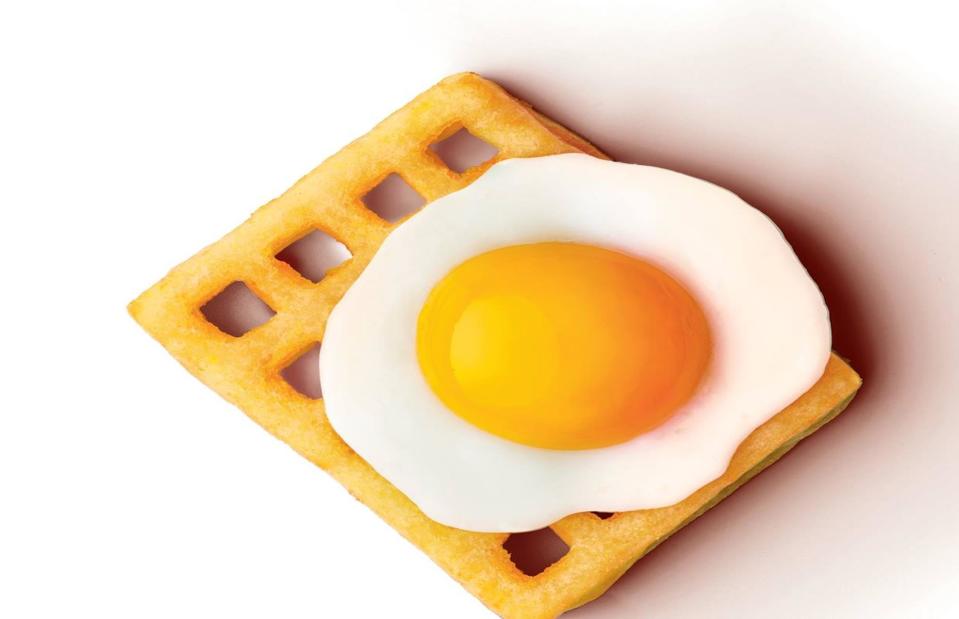
BirdsEye/Facebook
Why did we love these frozen, reconstituted potato sides from Birds Eye so much in the 1990s (and now, if we're honest)? Because they're waffly versatile, obviously. As the advert reminded us, you could: 'Grill ‘em, bake ‘em, load ’em, love ‘em. Waffly Versatile!' Potato waffles were certainly adaptable; whether you popped an egg on top and served them with baked beans at breakfast, or enjoyed them matched with those other freezer staples, Captain Birds Eye Fish Fingers, these were handy carbs to have stashed in your freezer.
Cadbury Fuse

Courtesy of Cadbury
We all have our favourite childhood chocolate bar and, for some kids growing up in the 1990s, the Fuse was the ultimate corner shop treat – a winning combination of raisins, peanuts, crispy cereal and fudge pieces, all cloaked in Cadbury’s chocolate. A novel newcomer on the block, it launched in 1996 to great fanfare and was an instant hit with Brits, with around 40 million bars sold in the first week. Despite the promising start, the confectionery company stopped producing the dense delight just 10 years later.
Caesar salad

Foodio/Shutterstock
A 1990s power lunch staple, the Caesar salad was what the UK businessperson ordered to look good. Little did we realise that this seemingly healthy and undeniably delicious salad was hugely calorific – in fact, it often had a fat content equivalent to that of a Big Mac. Originally invented in the 1920s in Mexico, and made popular in the US (specifically California), the salad is an irresistible combination of crunchy romaine lettuce liberally sprinkled with bacon bits, fried croutons, anchovies, a creamy dressing and curls of Parmesan. At Pizza Express, a fave chain of the era, you could have it with grilled chicken. Classy.
Capri-Sun
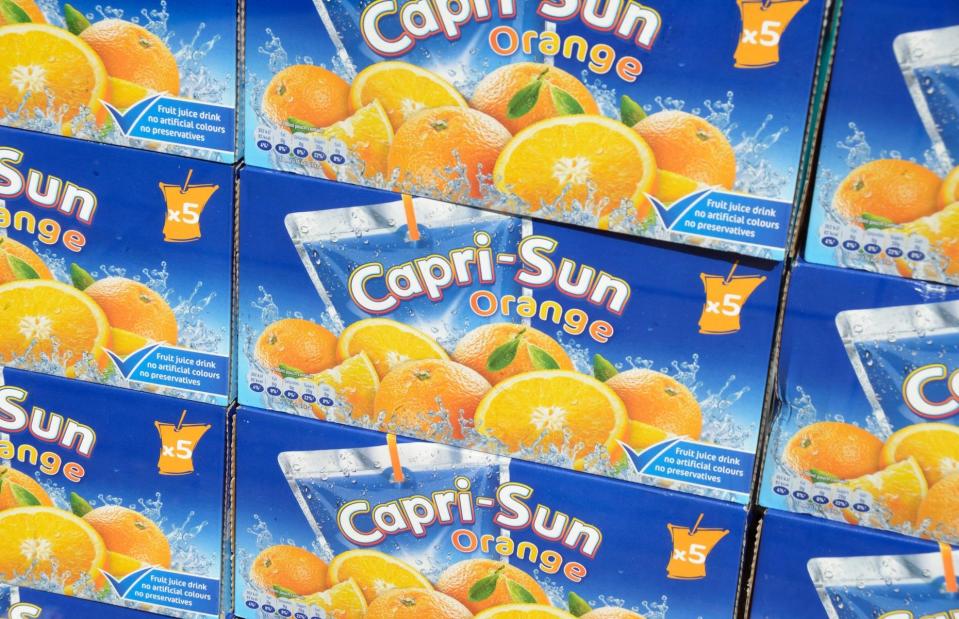
Roberto Herrett/Alamy Stock Photo
A silver pouch of Capri-Sun was a must-have lunchtime accessory for the 1990s kid. Perfectly squishable, it was easy to fit inside your lunchbox. Some childhood geniuses also realised it could be frozen and used to keep lunch items cool on those rare hot summer days. The original (and we’d argue best) flavour was orange, but tropical and blackcurrant also joined the family and garnered their own fans.
Cheesestrings
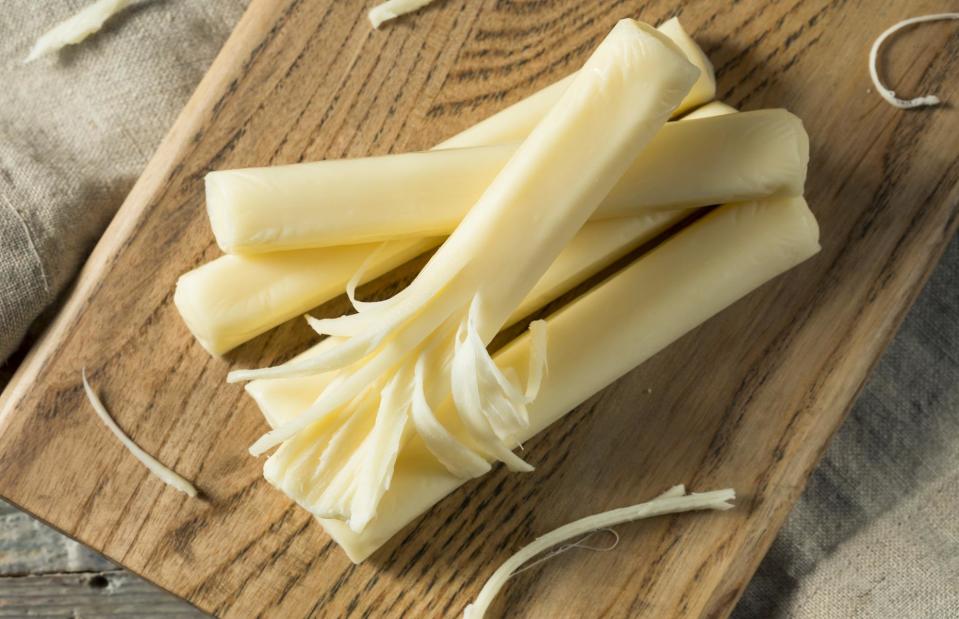
Brent Hofacker/Shutterstock
The cheese pull of the 1990s was the Cheesestring. A tube-shaped, plastic-wrapped cheese that you could peel to remove strips of cheese (bizarre when you think about it), it had us hooked, especially the pizza flavour. The lunchbox favourite, launched by Strings & Things, burst onto the scene in 1996 with a zany-looking cheese character and the catchy tagline ‘Real A-peelable Cheese’. They're still around, should the craving strike.
Chimichanga
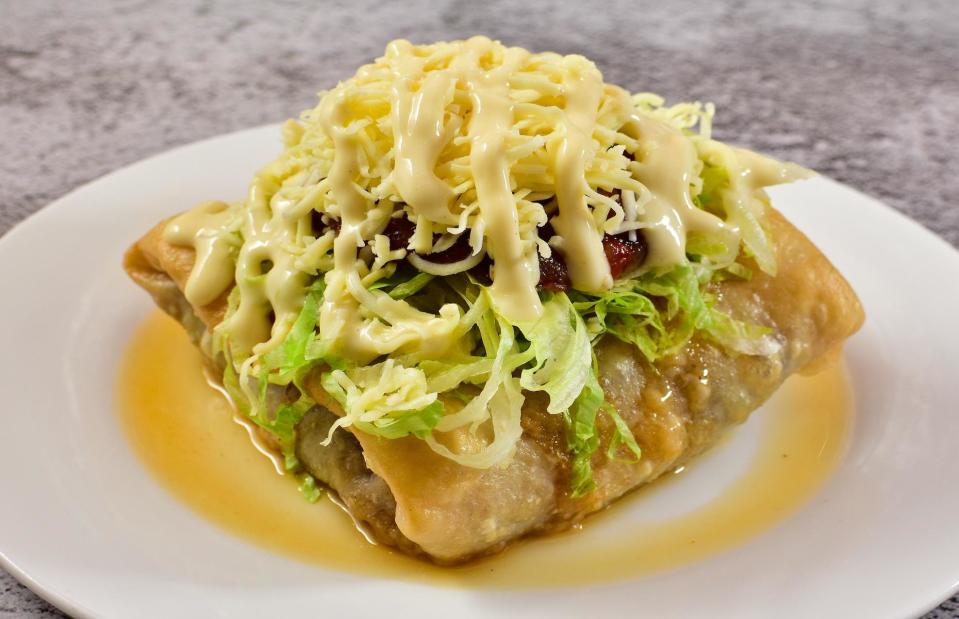
ArleneSolisChua/Shutterstock
The US trend for Tex-Mex spiced up the UK’s dinner table in this decade, too, with Old El Paso spice mixes becoming store-cupboard staples. We had a huge appetite for American-style chains, too, with TGI Fridays (hitting the UK in 1986) a popular choice for a Tex-Mex feast. We loved the chimichanga (deep-fried burrito), loaded nachos, hard shell tacos and enchiladas – the cheesier the better – served by waiters in cheery red-and-white striped uniforms.
Chocolate fondant
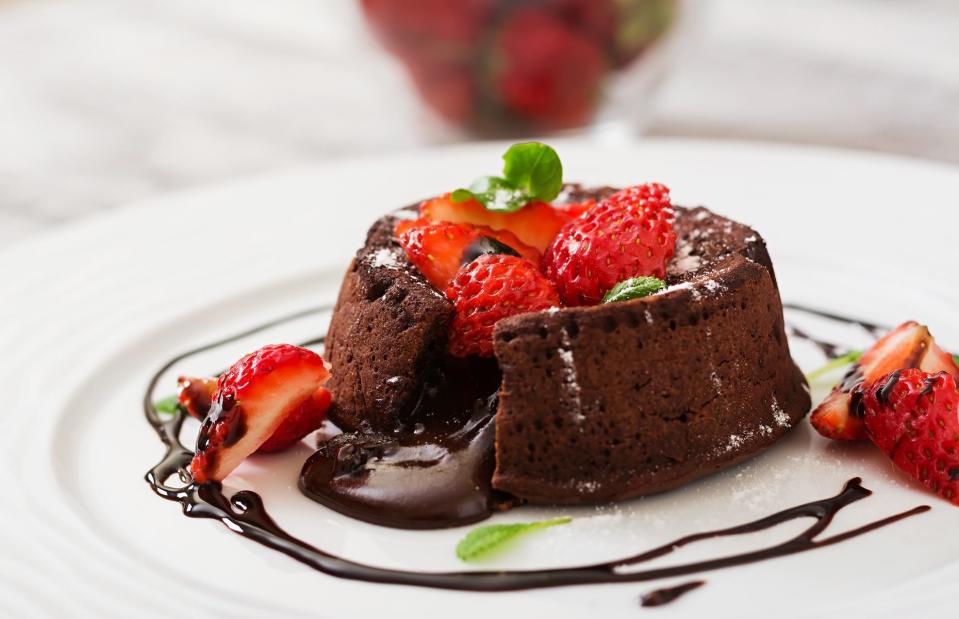
Timolina/Shutterstock
Now something of a culinary cliché thanks to its many appearances on MasterChef, the chocolate fondant was the undisputed posh pud of the 1990s. Its origins are contested; Michelin star chefs Michel Bras and Jean-Georges Vongerichten both claim to have created the molten-centred dessert. It quickly ran rampant across restaurants, and became a mainstay of high street restaurant chain and pub menus. Often called the chocolate lava cake instead, this gooey treat also became a popular ready-made dessert in supermarkets.
Dairylea Lunchables
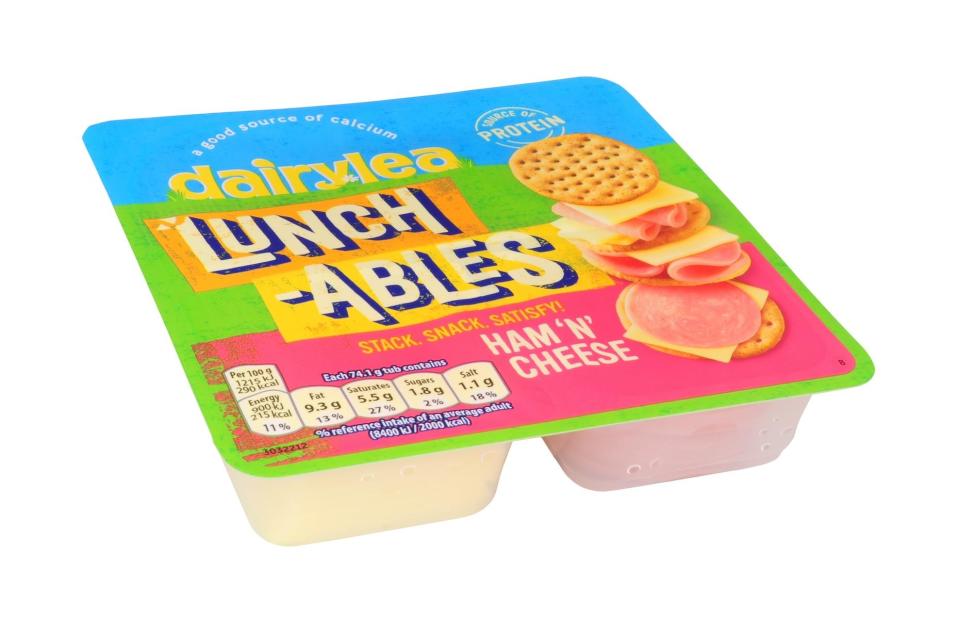
Philip Kinsey/Shutterstock
A school lunchbox staple, these handy snack boxes were a covetable item in the 1990s dinner hall, when ultra-processed food and single-use plastics were all the rage. Forget your box of Sun-Maid Raisins and soggy homemade sarnie; these perfect little rounds of pasty pink ham and plastic-like cheese, which you could sandwich together in the diddy crackers, were the ultimate make-your-own lunch, and always the envy of your mates.
Findus Crispy Pancakes
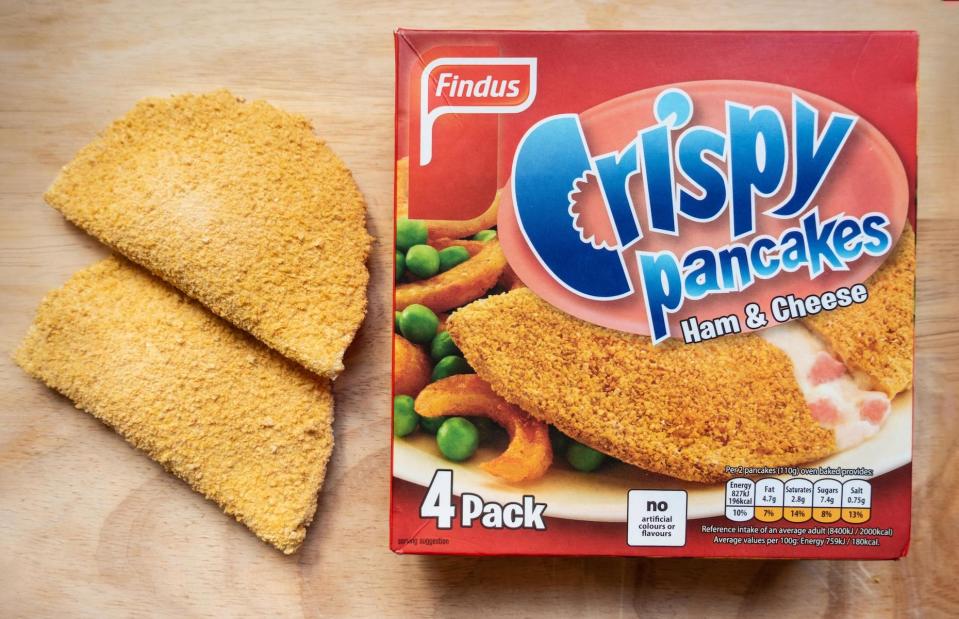
Matthew Ashmore/Alamy Stock Photo
With their promise of an easy meal, these frozen, breaded and filled pancakes were a revelation for many hardworking parents in the 1990s. Whether you were a fan of the cheese, cheese and ham or minced beef varieties, the pancake pockets, with their lava-like filling, were a quick win. Even if they didn’t enter your family’s home cooking repertoire, the endless adverts would have been seared on your brain.
Flumps, Frosties and Dip Dabs
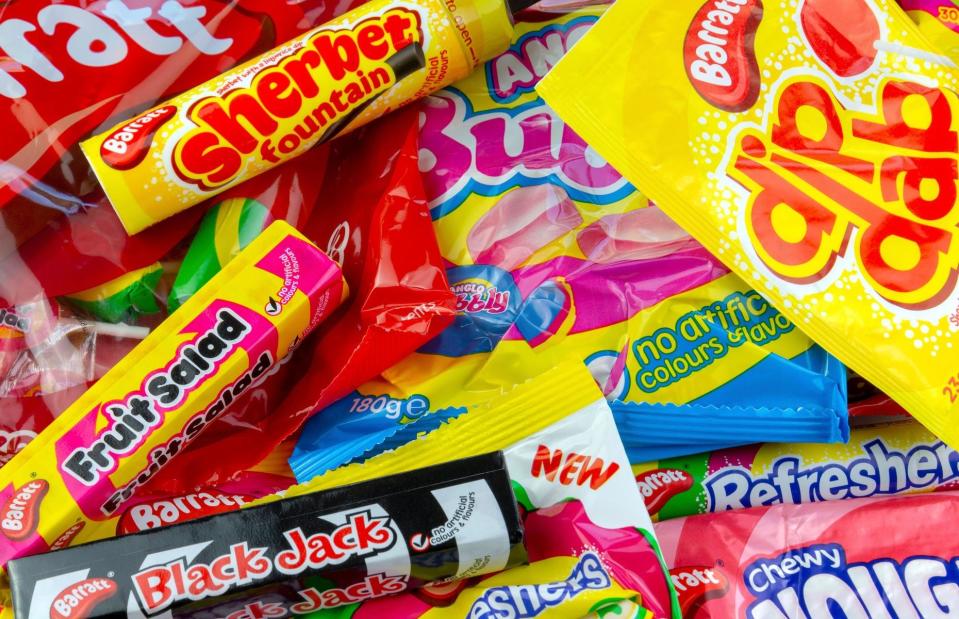
MarkUK97/Alamy Stock Photo
The 1990s were heady days for sweet lovers, with British sweet maker Barratt leading the charge for the most memorable sweets. Twisted marshmallow Flumps, Frosties (chewy coke-flavoured pastilles), Dip Dabs and Whams were among the top treats, alongside iconic confectionery like Refreshers, Catherine Wheels, Fruit Salads, Sherbert Fountains and the love-it-or-hate-it Black Jacks. Of course, the ultimate win was bagging a mixture of them (with some flying saucers and shrimps thrown in for good measure) at Woolworths' pick 'n' mix stand.
Frubes
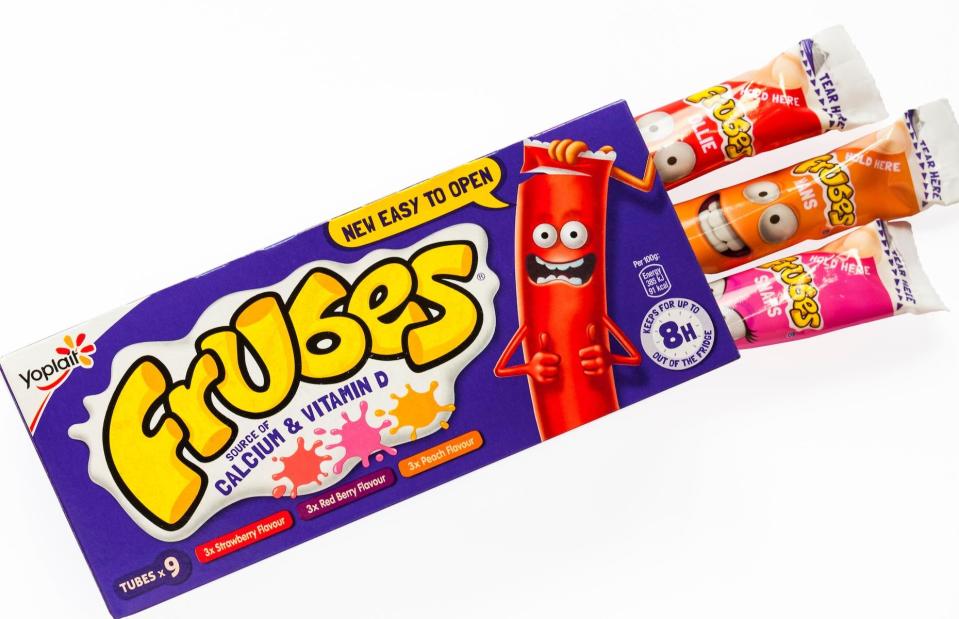
Carolyn Jenkins/Alamy Stock Photo
Another cornerstone of the cool kid's lunchbox, Frubes were tubes of squeezable, fruit-flavoured yogurt that were introduced to the UK by French brand Yoplait in 1991. Their USP was that they were the only hands-free yogurt around at the time, and they were an instant hit with both school children and parents glad to see little ones upping their calcium intake. Other yogurt-based Yoplait snacks, including tiny pots of Petits Filous fromage frais, proved popular too.
Goats’ cheese
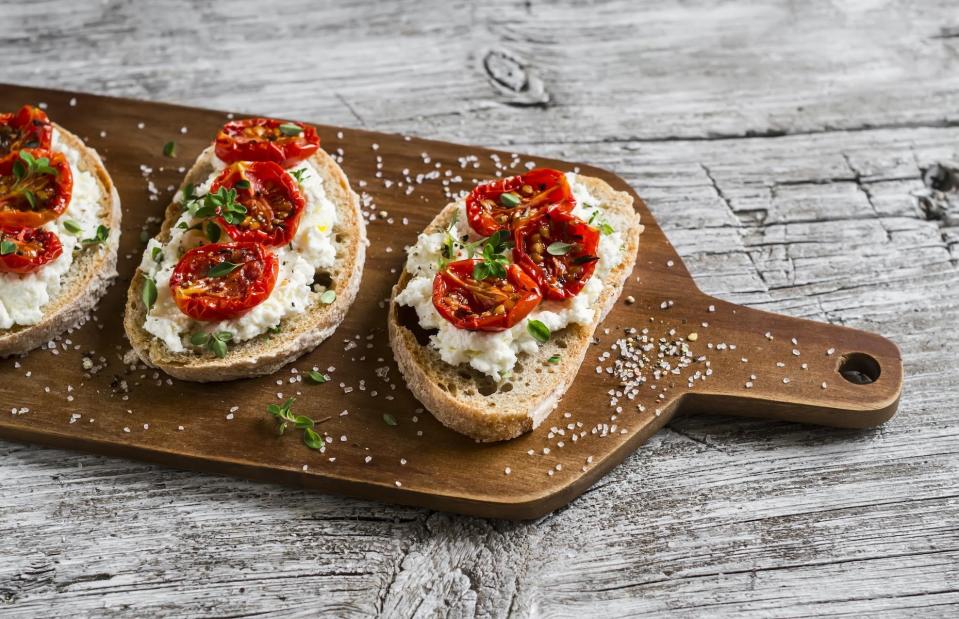
Kiian Oksana/Shutterstock
If you were a vegetarian in the 1990s, liking goats’ cheese was a must. The creamy, tangy cheese took a starring role in most veggie options, where it was often accompanied by another new food fad of the time: the sun-dried tomato. Thanks to Delia Smith, one of the TV cooks that introduced the nation to these exotic treats, our love of warm goats’ cheese salads and bruschetta topped with goats’ cheese and sun-dried tomatoes really flourished in this decade.
Club bars
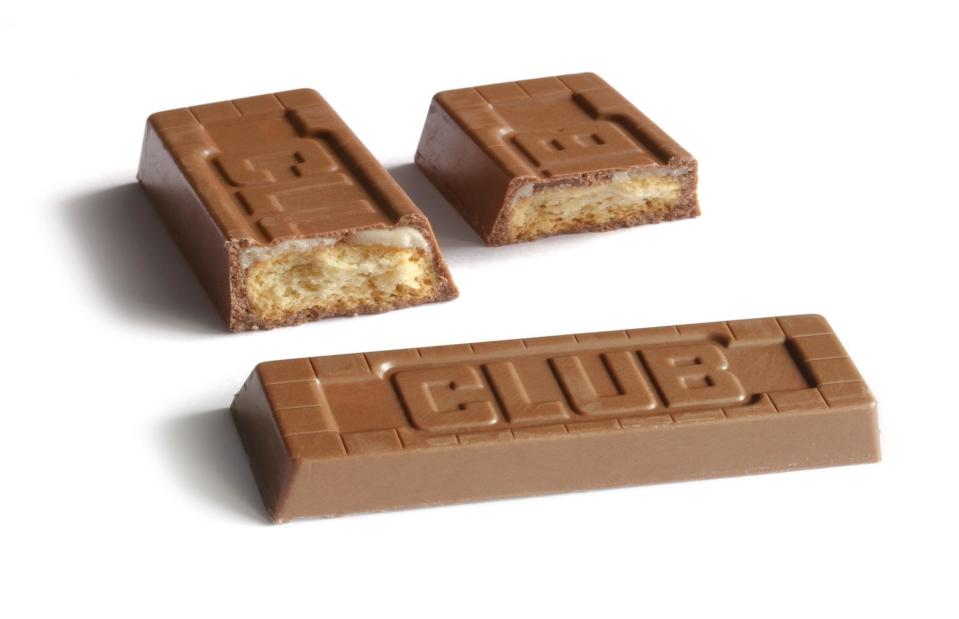
Ubcule/Wikimedia Commons/CC BY-SA 4.0
‘If you like a lot of chocolate on your biscuit, join our Club’ was sung by school kids around the UK. This catchy advertising jingle was just one reason why we had a soft spot for the Jacob’s Club. With a distinctive inner foil, outer paper wrapper and rectangular shape, the original Club Milk was a plain milk chocolate–coated biscuit. There was also a Club Orange, Club Mint and a Club Fruit. Club bars are still produced in the UK, now under the name McVitie's Club.
Kellogg’s Banana Bubbles
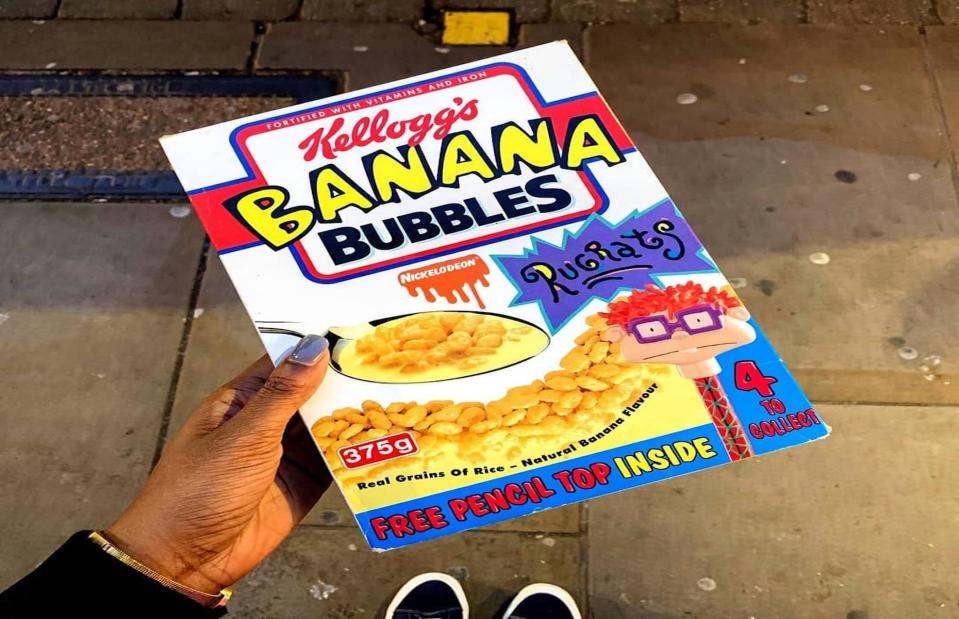
Cereal Killer/Facebook
We were spoilt for choice when it came to sugary breakfast cereals in this decade, when free toys and plastic trinkets in the box were a popular marketing craze to secure our loyalty. But some variants didn’t last the distance. Kellogg’s Banana Bubbles, Ricicles and chocolate counterpart Choco Ricicles were among them. The former, launched in the late 1990s, were basically banana-flavoured Coco Pops, and turned the milk a banana milkshake flavour.
Little Chef breakfasts
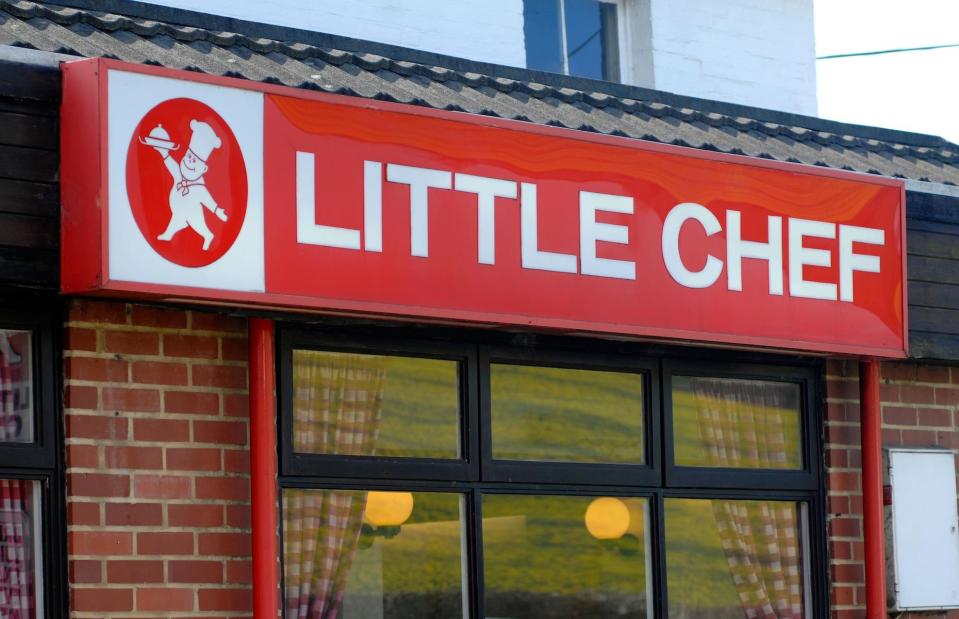
Jack Sullivan/Alamy Stock Photo
Spotting the red-and-white Little Chef sign as you drove along one of Britain’s A roads, usually in a car packed to the rafters for a family holiday, was a joyous feeling. This well-loved roadside restaurant served fry-ups, scrambled eggs on toast and pancakes drizzled with maple syrup to early morning customers up and down the country. By far the most iconic item on the breakfast menu was the 1994 Winter Olympics–inspired Olympic Breakfast, featuring (deep breath): two rashers of bacon, a sausage, two fried eggs, mushrooms, sautéed potatoes, a grilled tomato and baked beans, with a choice of fried bread or toast.
McCain Micro Chips
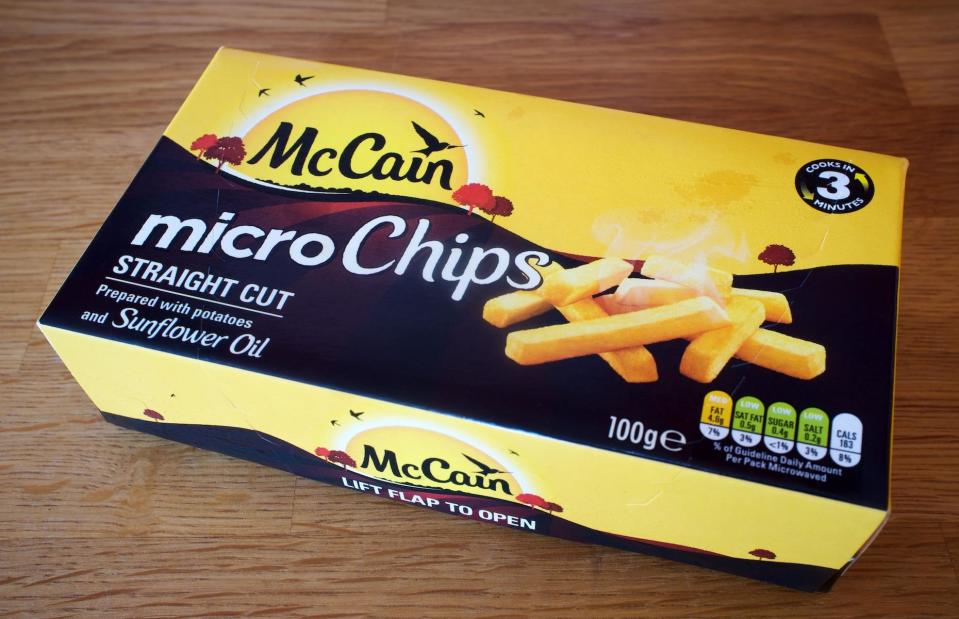
Clynt Garnham Food & Drink/Alamy Stock Photo
A hit with university students (and knackered parents) around the UK, back in the day the promise of having freshly cooked chips ready in just three minutes was a compelling brand USP. The fact that McCain’s revolutionary Micro Chips were soggy, often stuck together and were a far cry from the crunchy chips you could get from the chippy just down the road didn't affect their popularity.
New Covent Garden Soup Co. soups
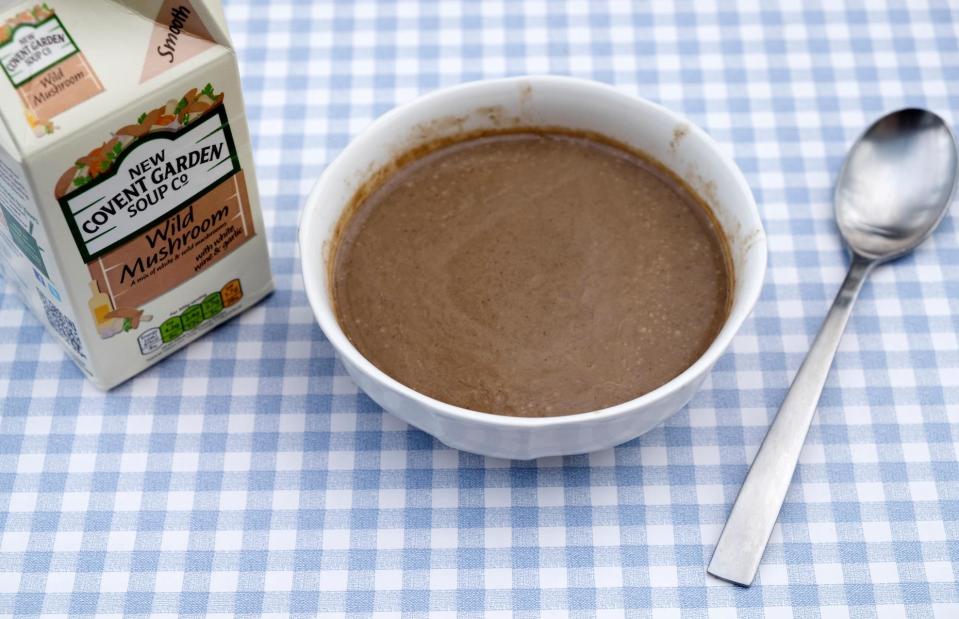
Clynt Garnham Food & Drink/Alamy Stock Photo
Thanks to chilled soup pioneers New Covent Garden Soup Co., the likes of carrot and coriander and wild mushroom soup became staples of the British lunch in the 1990s. A gourmet alternative to Campbell's tinned tomato soup, the range of fancy fresh soups in a carton shook up the soup category. The British brand first began trading in 1986, but were initially only stocked in the chiller cabinets of high-end food stores like Harrods and Selfridges. Sainsburys was the first supermarket to offer the chilled soup range in 1990, and the others swiftly followed suit.
Nik Naks
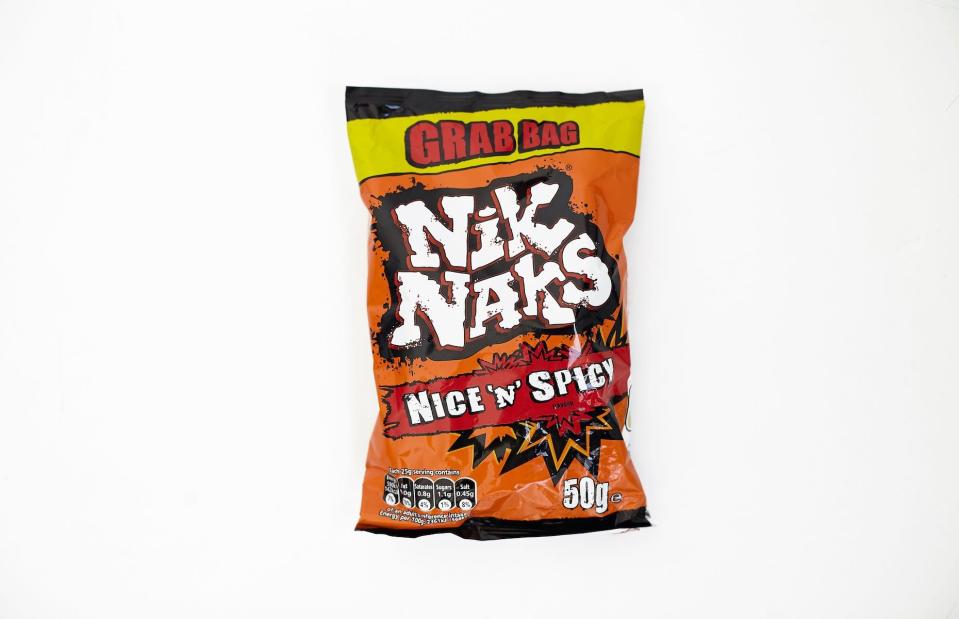
Ael/Alamy Stock Photo
In a range of eclectic flavours like Scampi ‘n’ Lemon and Rib 'n' Saucy, these knobbly corn crisps were a favourite savoury snack in the 1980s and 1990s, with their claim to fame being that no two Nik Naks were the same shape. Made by KP Snacks, they’re still available today along with some of the brand's other retro favourites: Wheat Crunchies, Discos and Space Raiders.
Opal Fruits
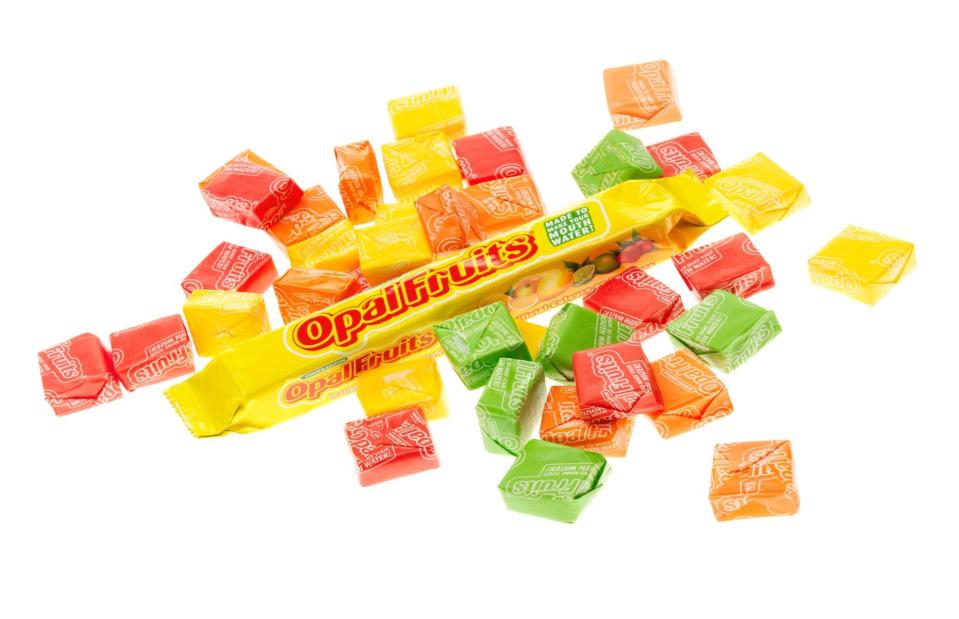
Martin Lee/Alamy Stock Photo
A standard choice for any UK kid let loose on the newsagent sweet counter, Opal Fruits were chewy, intensely flavoured fruit sweets that had been made by Mars since 1960. They were renamed as Starbursts in 1998, in line with the US brand. Though essentially the same (bar the addition of lemon and lime and blackcurrant flavours), the Opal Fruit brand remains a much-mourned loss among nostalgic sweet eaters who grew up in the 1990s.
Pesto
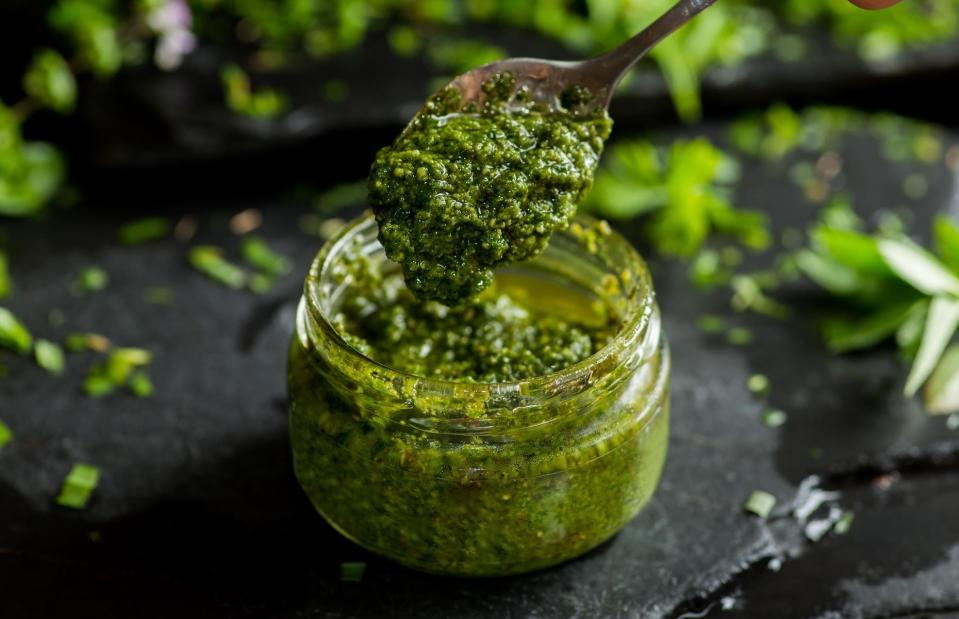
Smirart/Shutterstock
A Genoese speciality that’s become a failsafe easy meal base for parents of young children, pesto was a sophisticated novelty back in the early 1990s. Sacla’ Green Pesto – now a store cupboard staple for many – appeared on Britain’s supermarket shelves in 1991. Before we knew it, this vibrant green sauce was being dotted on (and drizzled over) everything. Red pesto (made using sun-dried tomatoes) swiftly followed; it was considered a travesty by Italian food purists, but Brits lapped it up (mostly spread on crispy crostini).
Pop-Tarts
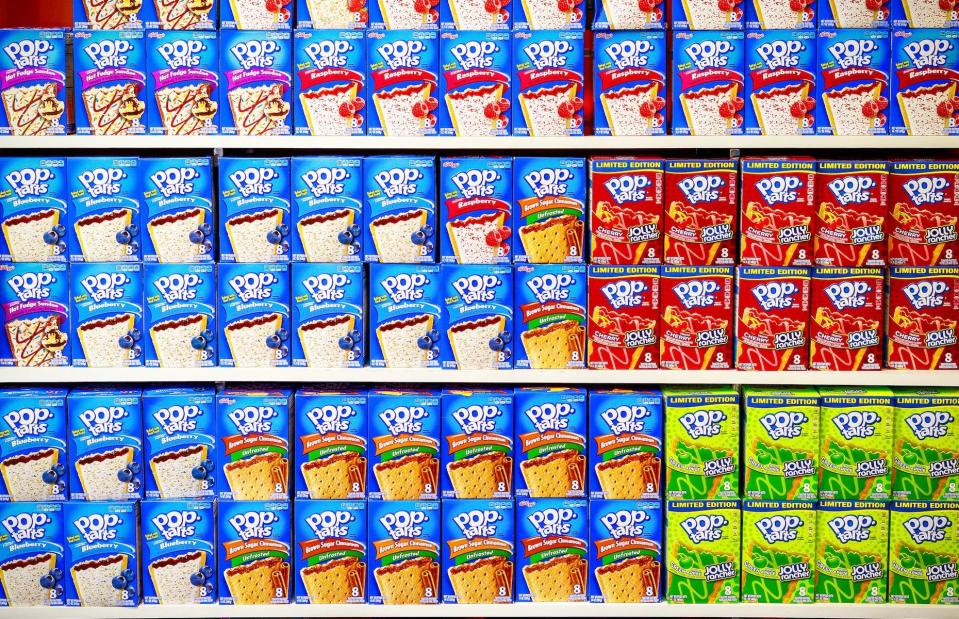
I Wei Huang/Shutterstock
Kellogg’s launched its popular US Pop-Tarts brand into the UK in 1990. These toastable, frosted pastries were a revolutionary breakfast item, with kids clamouring to get them on their breakfast table. But the saccharine hand-held items, with their rectangular shape and inferno-hot jam filling, weren’t quite as much of a hit with the British breakfast market as they were in the US. That said, they're still sold in UK supermarkets.
Pot Noodle
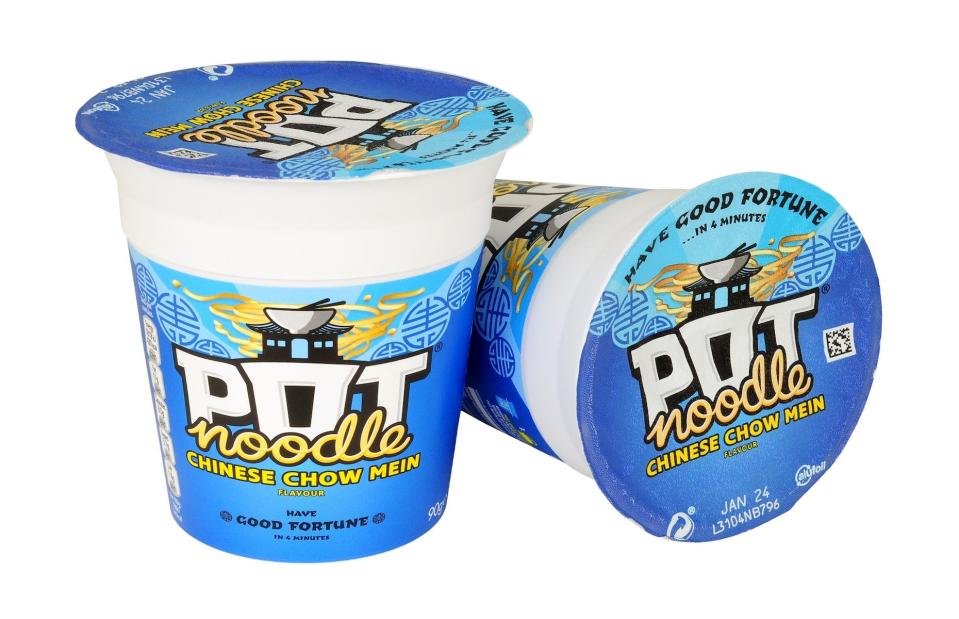
Philip Kinsey/Shutterstock
Back in the 1990s, Golden Wonder's Pot Noodle was a revolutionary hot snack that introduced many of us to the joys of slurping noodles (way before we'd even heard of ramen). Cheap and easy, this was a student staple – all you needed to know was how to boil a kettle. However, there was a certain knack required when stirring, or you'd end up with a gloopy, salty mess at the bottom of the pot. Leaving the noodles to stew for just the right amount of time, to ensure you’d properly revived the dehydrated ingredients, was key too.
Pret sandwiches
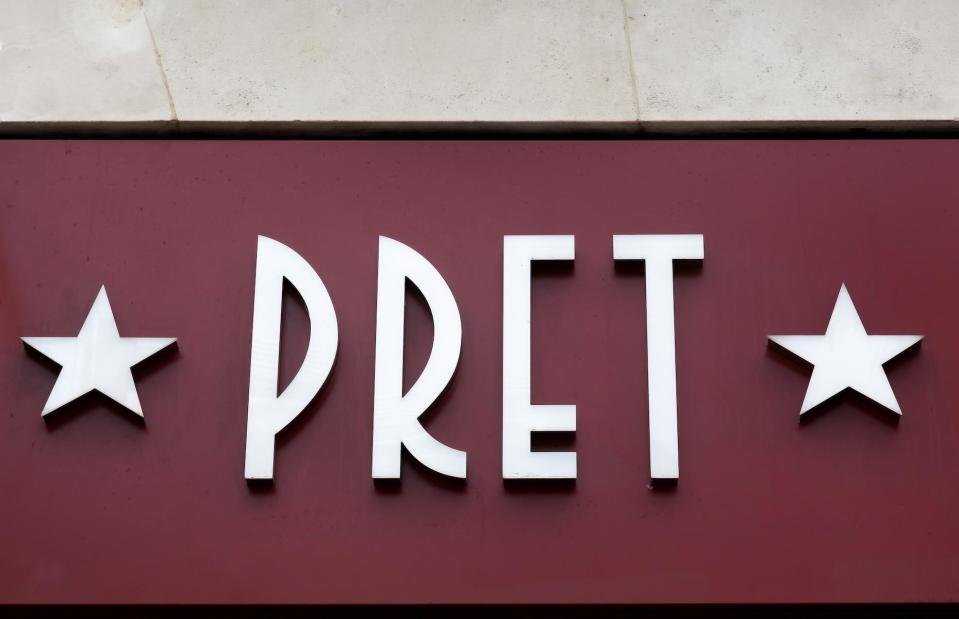
ricochet64/Shutterstock
The very first outlet of British sandwich shop franchise Pret a Manger opened in London in 1986, with the second store following four years later. By the 1990s, Pret was (and still is) a major player in the chilled-prepared sandwich market, and grabbing a latte and a ready-made sarnie became part of modern working life. As well as its traditional bestsellers (think tuna and cucumber and posh cheese and pickle), the chain dazzled us with daring new combos like crayfish and rocket.
Rocket
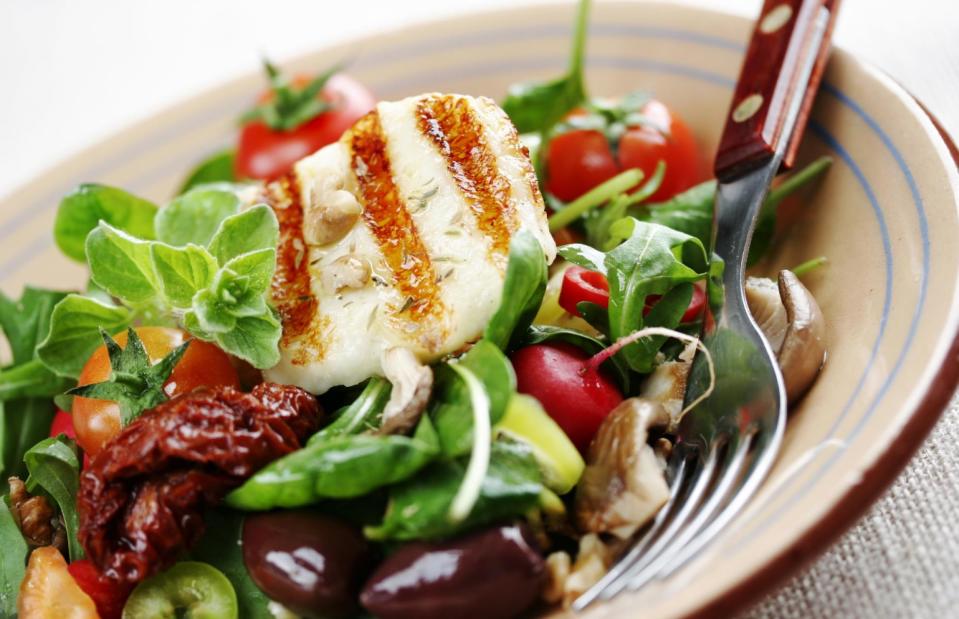
Livv friis-larsen/Shutterstock
When rocket was ‘re-discovered’ 30 years ago, it became the height of culinary fashion and the salad leaf of choice for food trendsetters. Known as rucola or arugula in the US, the Italian leaf has an intense, peppery flavour and was actually a popular ingredient in 16th-century Britain, but fell from favour over the centuries. After we embraced it with such fervour in the 1990s, the likes of rocket salad with balsamic vinegar and sun-dried tomatoes became something of a culinary cliché.
Stuffed crust pizza
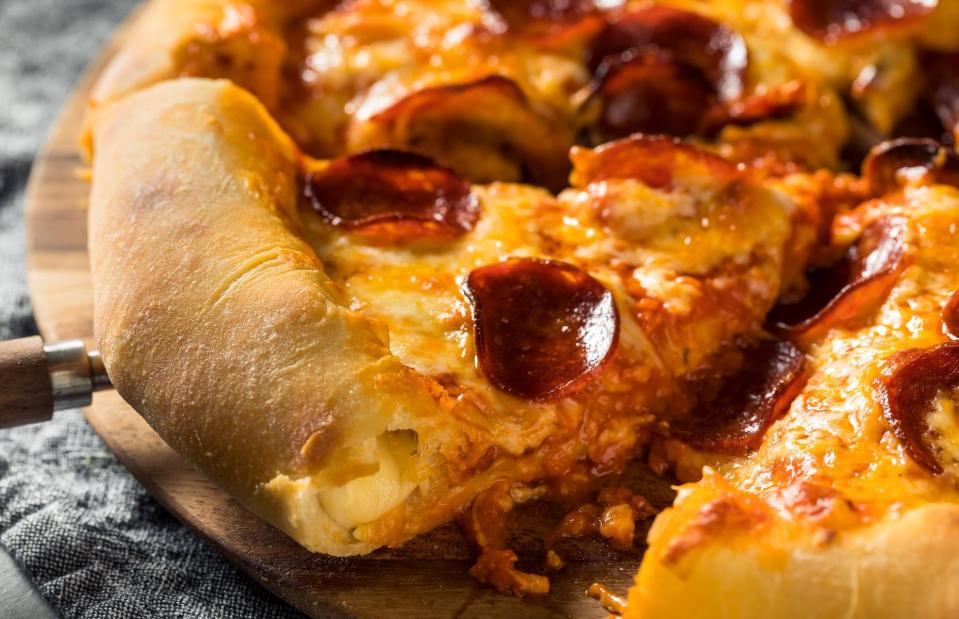
Brent Hofacker/Shutterstock
The year 1995 was a historic one for pizza lovers in the UK. This was when favourite high street pizza chain, Pizza Hut, launched the stuffed crust. We loved these extra cheesy pan pizzas almost as much as we loved our multiple visits to the salad bar (those crispy croutons made everything feel fancy). Top celebs of the time, TV presenter Jonathan Ross and model Caprice Bourret, starred in the adverts for the new cheese-tastic pizza.
Sunny Delight
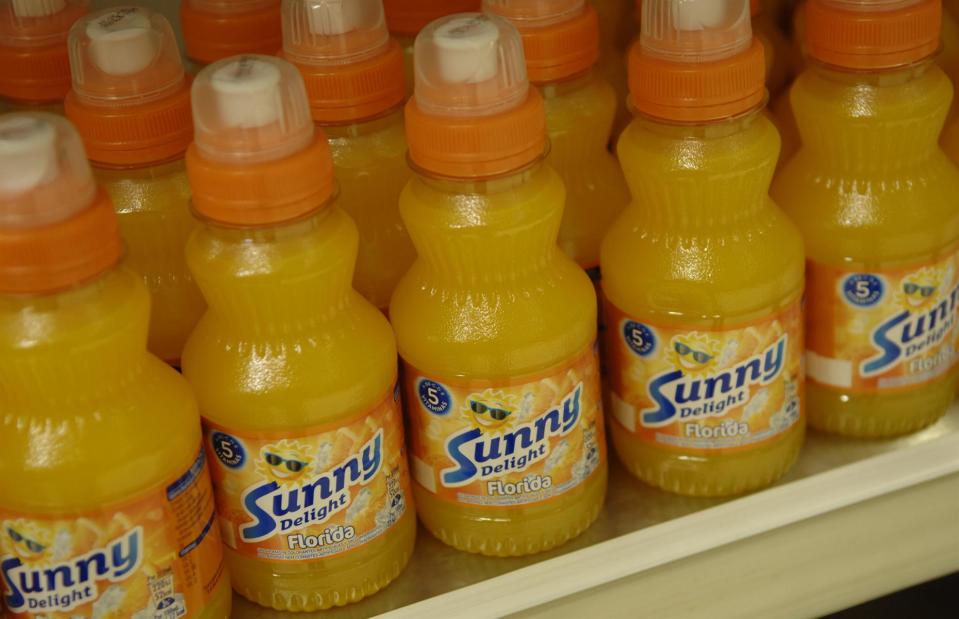
Medicimage Education/Alamy Stock Photo
This vibrant orange drink launched in the UK in 1998, with a huge marketing campaign by Proctor & Gamble. The British public were initially dazzled by its modern-looking packaging and Florida origins. However, Sunny Delight's high sugar levels and low real fruit juice content was revealed by the UK's Food Commission, who criticised the brand for misleading consumers about the drinks health credentials. It was rebranded as SunnyD in 2003, with a higher fruit juice count and no artificial ingredients or added sugar.
Turkey Dinosaurs
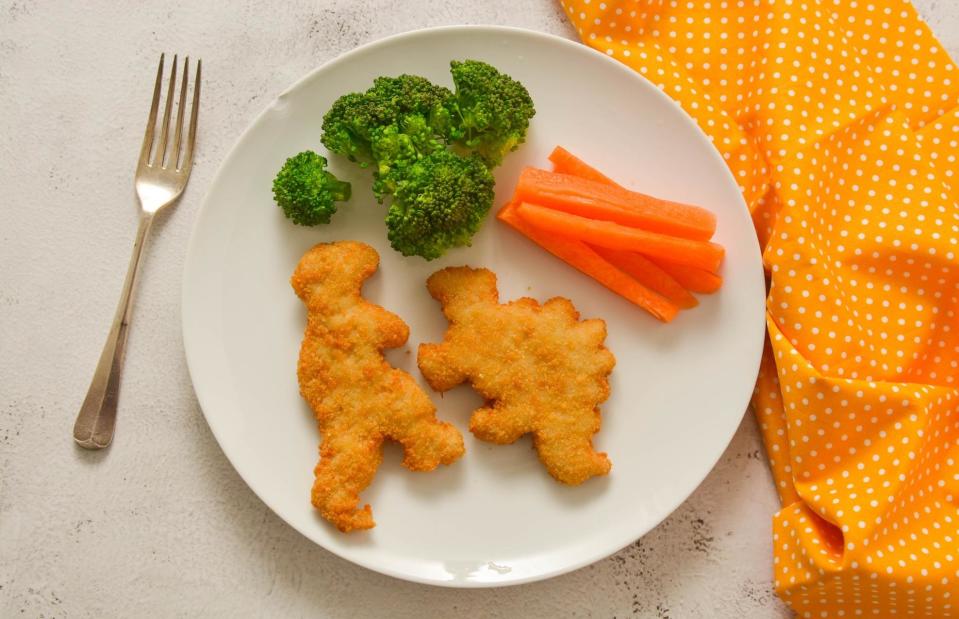
Erhan Inga/Shutterstock
How do you get children to lap up a certain food? Form it into an appealing animal shape, of course. The Bernard Matthews brand did exactly that when its turkey dinosaurs roared into our freezer cabinets in the 1990s. The processed bites quickly became an easy, kid-friendly meal all over the UK. Turkey dinosaurs then disappeared for a while, but were far from extinct; they reappeared as Jurassic World 9 Turkey Dinosaurs in 2022, to coincide with the release of Jurassic World Dominion.
Viennetta
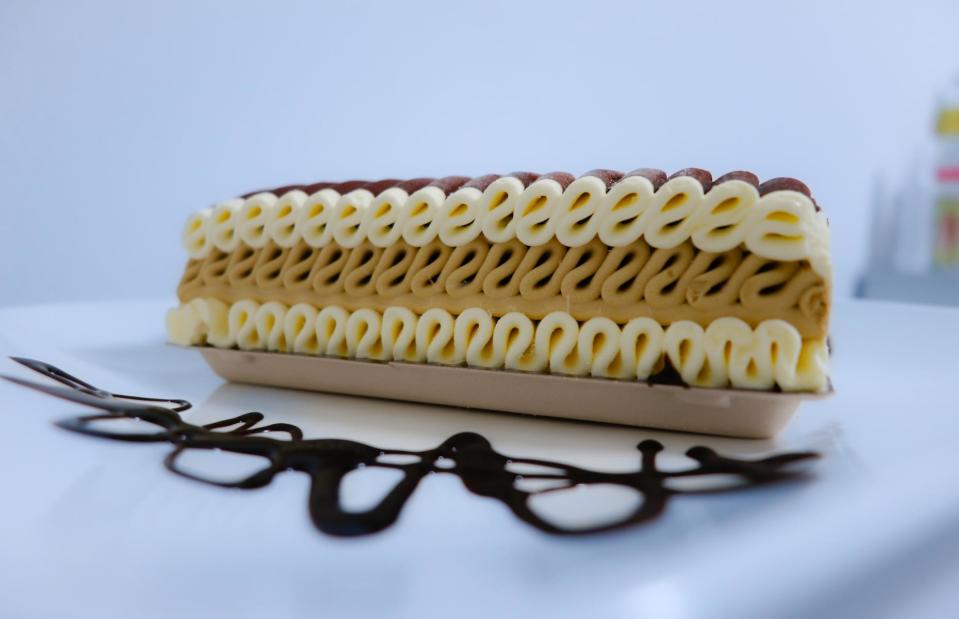
Palette vetra/Shutterstock
Viennetta was originally launched in 1981 by Wall’s Ice Cream as a Christmas special, but really hit its prime in the 1990s. The dessert secured a place in the nation’s freezers (and hearts) thanks to its soft layers of artfully ruffled ice cream alternated with crunchy sheets of chocolate. The Viennetta Mint followed, while the Viennetta Birthday Cake – with layers of vanilla and strawberry flavour ice cream and multi-coloured sprinkles – was launched in 2022, to celebrate 100 years of Wall’s making ice cream.


